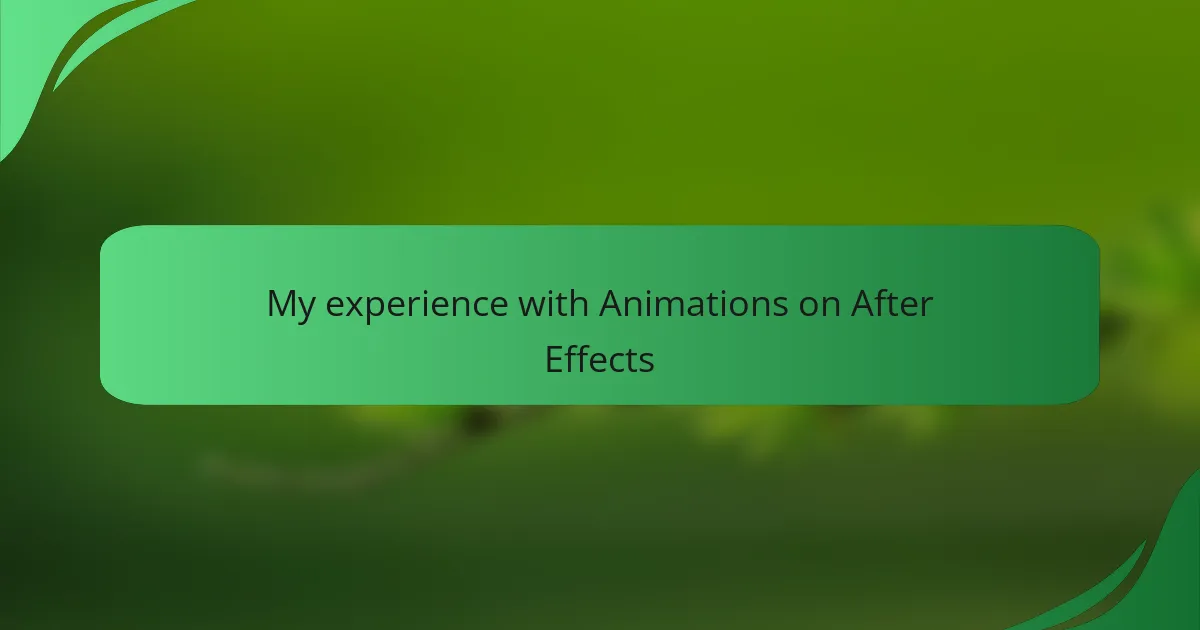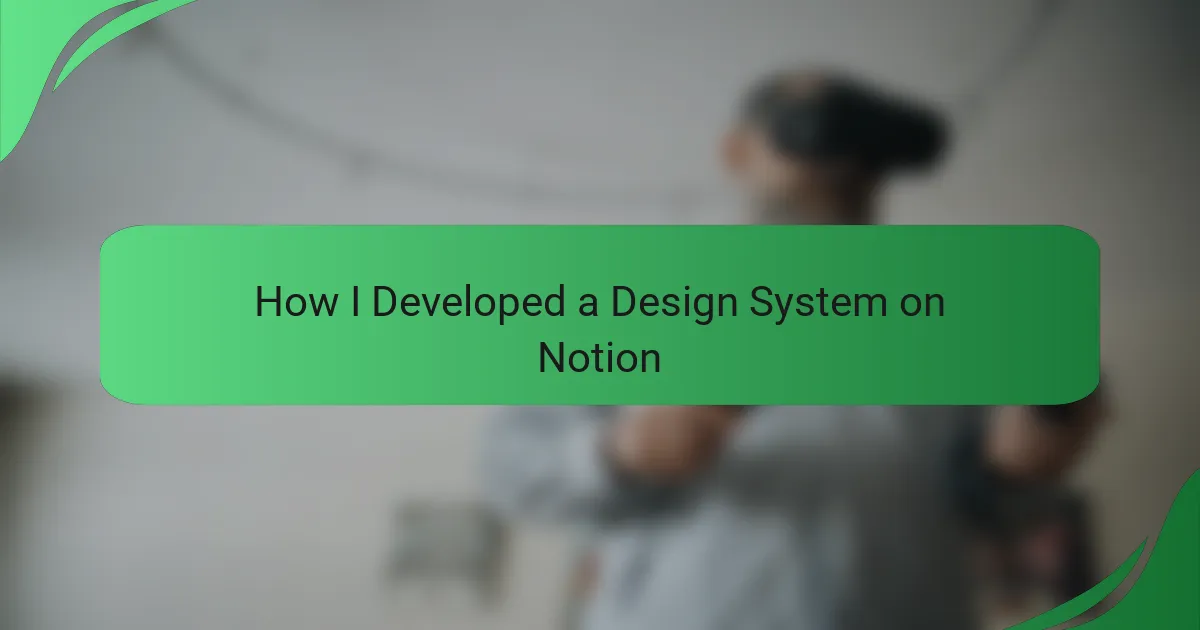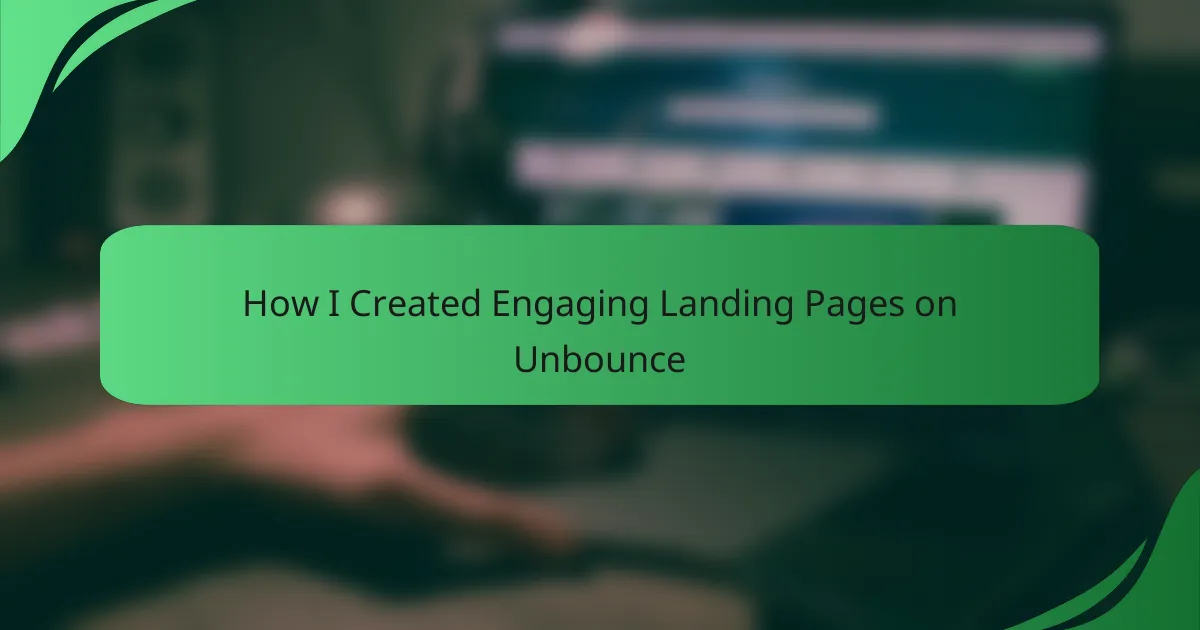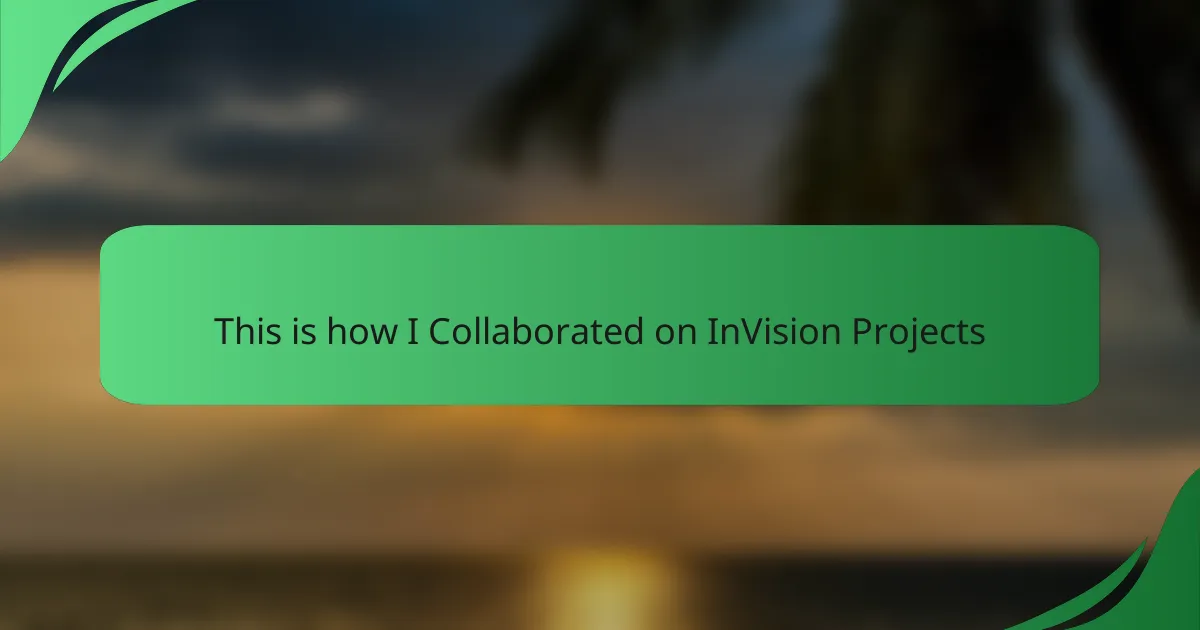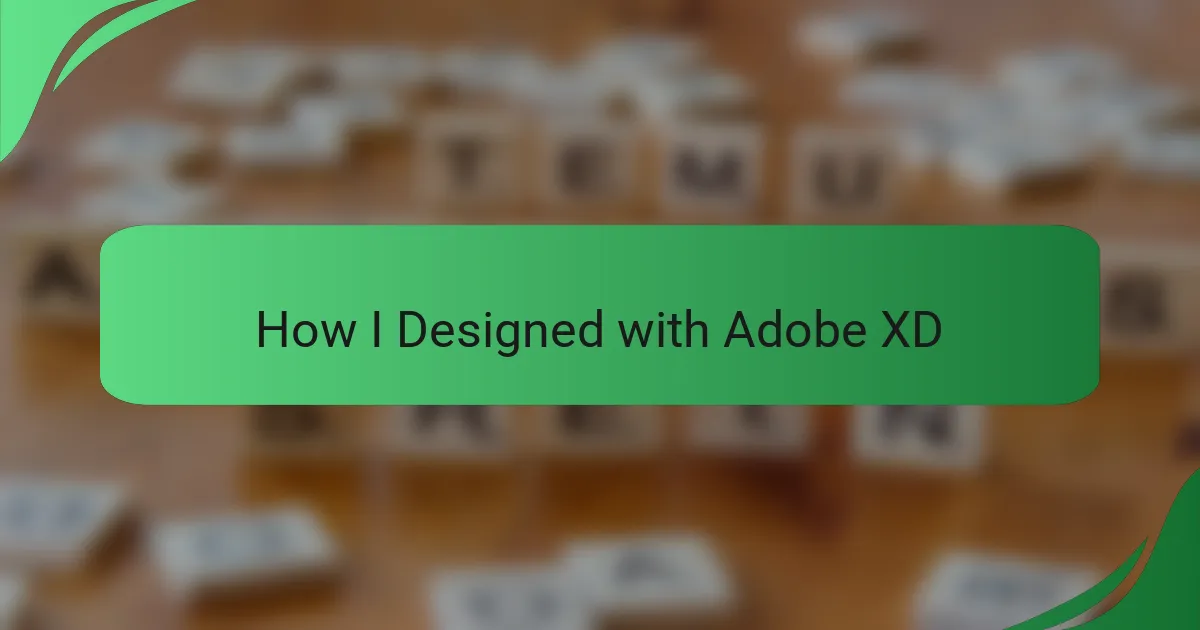Key takeaways
- Effective interface interaction design combines aesthetics and functionality, enhancing user experiences through intuitive navigation and responsive feedback.
- After Effects provides powerful features like keyframe animation and compositing, crucial for creating engaging motion graphics.
- Animations in design improve user engagement and feedback, making interactions feel more natural and intuitive.
- Mastering animation techniques, such as easing and layering, can significantly elevate the quality of projects and create emotional connections with viewers.
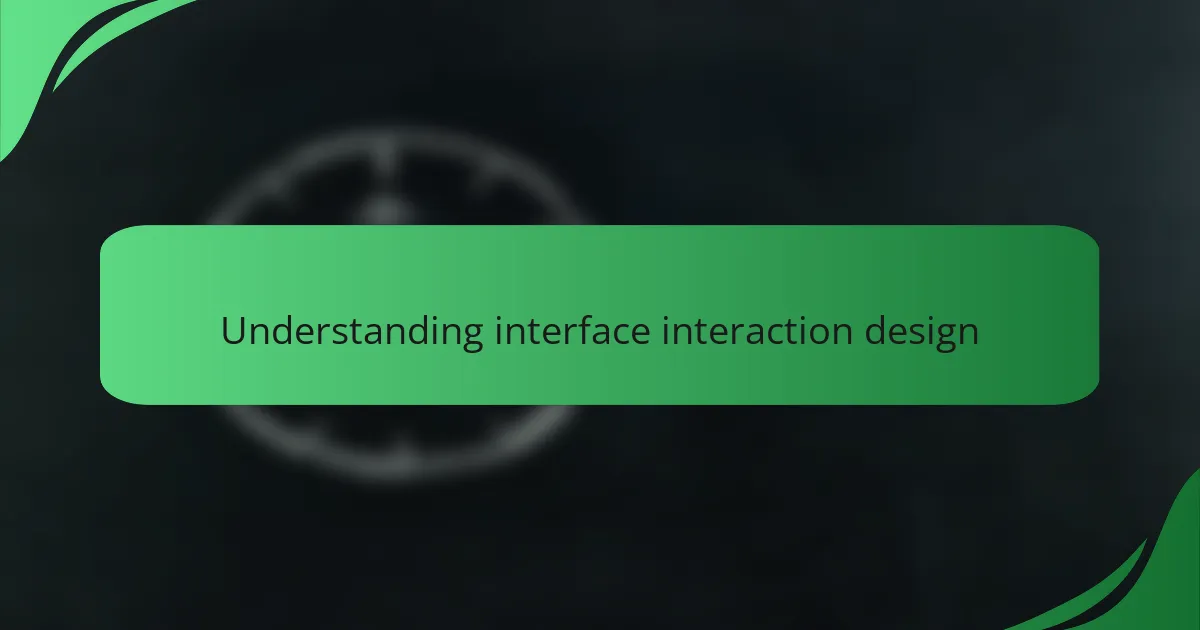
Understanding interface interaction design
Understanding interface interaction design is essential for creating engaging user experiences. Drawing from my experience, I’ve found that a well-designed interface can transform how users interact with a product. It’s about making those interactions intuitive and enjoyable, which is where the magic of animations in tools like After Effects comes into play.
When I first started exploring interface design, I realized that animations could breathe life into static elements. They guide users, highlight important features, and provide feedback. For instance, I remember designing a button that subtly pulsed when hovered over, creating an inviting feel that encouraged clicks.
In my opinion, effective interface interaction design requires a balance of aesthetics and functionality. Animations should enhance usability, not detract from it. This practice contributes to a seamless flow that can elevate an ordinary interface into a delightful experience.
| Key Element | Importance |
|---|---|
| Intuitive Navigation | Enhances user experience by making interactions natural. |
| Responsive Feedback | Helps users understand actions and results through animations. |
| Aesthetics | Attracts and retains users by making the interface visually appealing. |

Key features of After Effects
After Effects is an incredible tool that has transformed the way I approach animation and motion graphics. It offers a robust set of features that allow for detailed control and creativity. For me, diving into the layers and effects was like peeling back the layers of an onion – each one reveals something new and exciting. The ability to manipulate elements with such precision really helped me express my ideas visually.
Here are some key features of After Effects that I’ve found invaluable:
- Compositing: This allows you to blend multiple layers and create stunning visuals that captivate the audience.
- Keyframe Animation: I love how keyframes enable precise movement control over time, bringing my designs to life.
- Effects and Presets: There’s a vast library of effects that can enhance any project, making it feel polished and professional.
- Adjustment Layers: These layers provide non-destructive editing, which has saved me countless hours of workflow adjustments.
- 3D Space: The ability to work in 3D provides depth to animations, making them more immersive and engaging.
- Integration with Adobe Suite: The seamless connection with other Adobe tools has streamlined my productivity, allowing me to move effortlessly between projects.
Each of these features enhances my workflow and elevates my animation projects, making After Effects an indispensable tool in my creative toolkit.
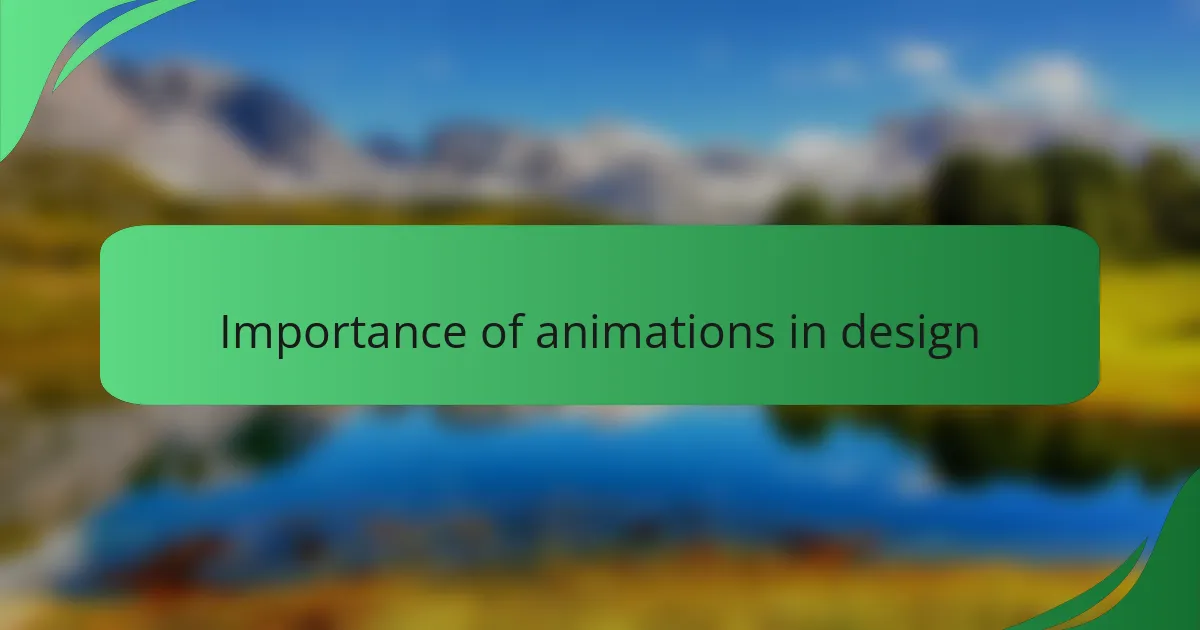
Importance of animations in design
Animations play a crucial role in design by enhancing user experience and guiding interactions. From my experience, animations can make interfaces feel more intuitive and engaging. They provide feedback, communicate state changes, and can even inject personality into a design which keeps users invested.
What I’ve noticed is that well-executed animations can evoke emotions, creating a sense of delight or satisfaction. For example, when I added a subtle fade-in effect on a button in a recent project, users responded with positive feedback. It’s fascinating how such small details can significantly influence user perception.
Here’s a comparison to emphasize the importance of animations in design:
| Aspect | Without Animation | With Animation |
|---|---|---|
| User Engagement | Static, less interaction | Dynamic, draws attention |
| Feedback | No clear indication of actions | Clear visual cues |
| Navigation | Can feel abrupt | Smoother transitions |

My journey with After Effects
My journey with After Effects has been nothing short of transformative. I recall the first time I opened this software; it felt like stepping into a world of limitless possibilities. I remember experimenting with various animations, from simple transitions to more complex motion graphics, and I was genuinely amazed at how each tweak could change the entire feel of my designs.
One project that stands out involved creating an animated logo for a client. It was a challenge I eagerly accepted, and After Effects provided the tools I needed to make the logo not only move but come alive. Watching the client’s eyes light up during the reveal was a pivotal moment for me. It reinforced my belief that good animation doesn’t just enhance a design; it can evoke emotions and resonate with the audience on a deeper level.
As I continued to explore After Effects, it became clear that my initial hesitation about mastering such a sophisticated tool was unfounded. The learning curve was steep, yes, but every small victory felt rewarding. I often asked myself, “What if I could make this come to life?” And in time, I found that the answer was always within reach, thanks to this powerful software.

Techniques I learned for animations
In my journey with Adobe After Effects, I stumbled upon several techniques that really enhanced my animation skills. For instance, learning how to use keyframes effectively was a game changer. Adjusting the timing and spacing between keyframes allowed me to create smooth and professional animations, which was incredibly satisfying to witness.
Another essential technique I embraced was easing. This simple adjustment made my animations come to life—no longer did they move like robots. Instead, they had flow and character, which directly improved the user experience. I still remember the excitement when I first applied ease-in and ease-out to a bouncing ball; it felt like I had unlocked a new level in my creative process!
Here are some key techniques I learned for animations:
- Keyframing Basics: Understanding how to set and adjust keyframes for position, scale, and rotation.
- Easing Functions: Utilizing ease-in and ease-out to give animations realism and fluidity.
- Layering Animations: Combining multiple layers to create depth and complexity in designs.
- Use of Masks: Learning how to use masks layered over other effects to create dynamic shapes and transitions.
- Time Remapping: Experimenting with time remapping to control how animations unfold over time.
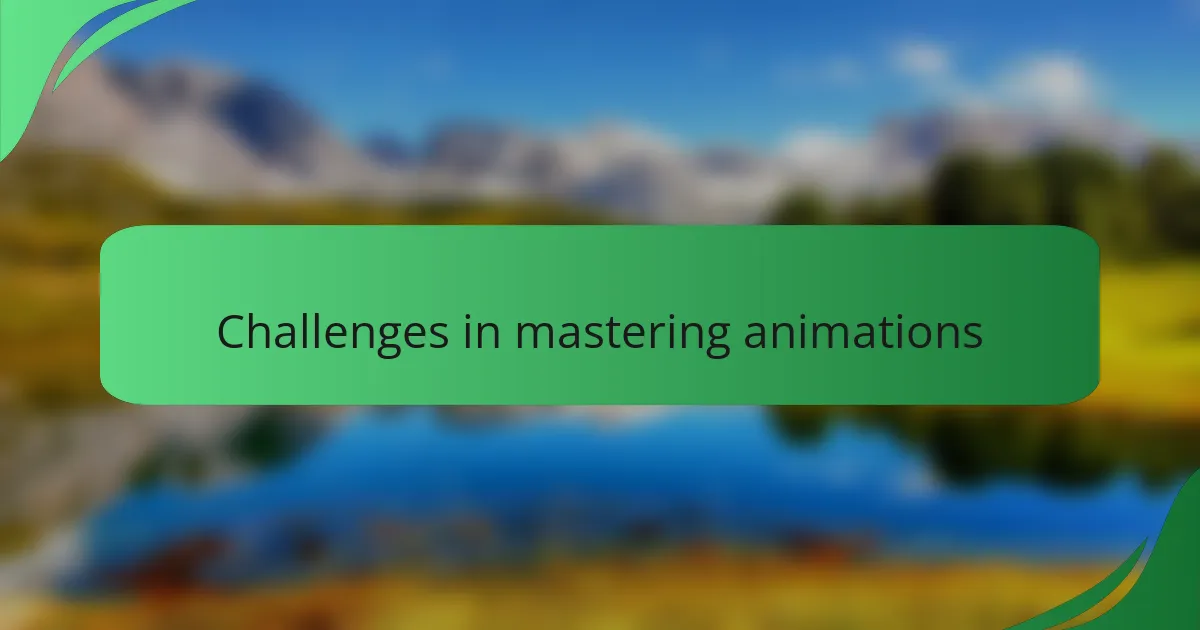
Challenges in mastering animations
Mastering animations in After Effects can be quite a journey, as I’ve experienced firsthand. One of the biggest challenges I faced was comprehending the vast array of tools and features available. At first, it felt overwhelming to navigate through all the options, and there were times I doubted my ability to create anything worthwhile. But once I started breaking tasks into smaller, manageable steps, I began to find my rhythm.
Another hurdle was the learning curve associated with keyframe manipulation. Initially, I found it tricky to make animations feel fluid and natural. I often spent hours tweaking timings and easing effects, only to find that it still didn’t quite convey the emotion I wanted. Yet, that trial-and-error process taught me valuable lessons about patience and persistence in design.
- Understanding the interface can be daunting; it requires time and practice.
- Keyframe manipulation is essential but can be frustrating when trying to achieve smooth animations.
- Finding the right easing options can dramatically affect the feel of the animation.
- Balancing creativity with technical limitations often leads to unexpected solutions.
- The community and resources available can be incredibly supportive yet sometimes overwhelming in their volume.
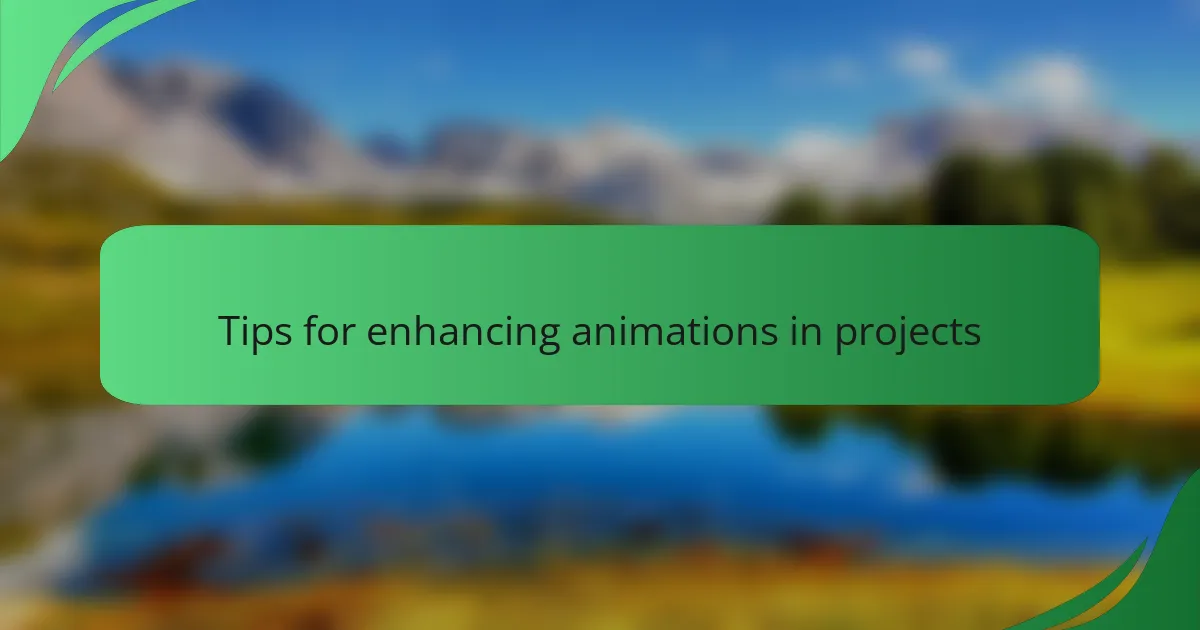
Tips for enhancing animations in projects
When it comes to enhancing animations in projects within After Effects, the smallest details can make a world of difference. I’ve often found that subtle motion tweaks can transform a flat design into something vibrant and engaging. For instance, adding ease to your keyframes not only smooths transitions but can also evoke a more natural feel in your animations, giving them life.
One of my favorite strategies is to take inspiration from real-world movements. Observation has taught me that mimicking how objects move in our daily lives can create more relatable animations. By focusing on timing, spacing, and even anticipation, you’ll find that your animations resonate more deeply with viewers.
To really dial up the impact of your animations, consider the following tips:
- Use easing to create more fluid motion.
- Experiment with easing types—both ease-in and ease-out can significantly change the feel.
- Add secondary animations for depth; little movements in a character’s hand or eyebrows can draw viewers in.
- Don’t shy away from color and light adjustments to enhance visual interest.
- Adapt timing based on the context—what feels fast and urgent in one animation might need a slow, deliberate approach in another.
These techniques have helped me create more dynamic and engaging projects, and I hope they inspire you too!
